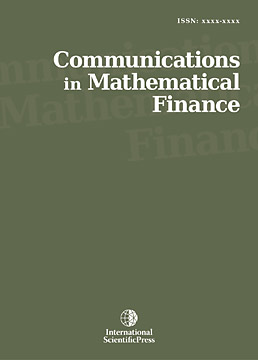Communications in Mathematical Finance
Sarima Modelling of Nigerian Bank Prime Lending Rates
-
 [ Download ]
[ Download ]
- Times downloaded: 10731
-
Abstract
The monthly Prime Lending Rates of Nigerian Banks are modeled herein by SARIMA methods. The realization considered here spans from January 2006 to July 2014. The original series called herein PLR has a generally horizontal secular trend. Its correlogram reveals some seasonality of period 12 months. Moreover, preliminary data analysis shows that yearly maximums are mostly between October and the next March, and the minimums mostly between April and September. That means that the maximums tend to lie in the first and the fourth quarters of the year and the minimums in the second and third quarters of the year. That means that the series is seasonal of 12 monthly period. Twelve-monthly differencing of PLR yields the series called SDPLR which also has a generally horizontal trend. Augmented Dickey Fuller (ADF) Tests consider both PLR and SDPLR to be non-stationary. A non-seasonal differencing of SDPLR yields the series DSDPLR which is considered stationary by the ADF tests. Its correlogram attests to a 12-monthly seasonality as well as the presence of a seasonal moving average component of order one. The autocorrelation structure suggests the proposal of the following models: (1) a SARIMA(0,1,1)x(0,1,1)12 (2) a SARIMA(0,1,1)x(1,1,1)12 and (3) a SARIMA(0,1,1)x(2,1,1)12 . The foregoing models following a descending order of degree of adequacy on AIC grounds. However, from the SARIMA(0,1,1)x(2,1,1)12 model, a SARIMA(0,1,0)x(2,1,1)12 model becomes suggestive and it outdoes the rest on all counts. Its residuals are mostly uncorrelated and also follow a normal distribution with mean zero. Hence it is adequate and may be used to forecast the prime lending rates.
